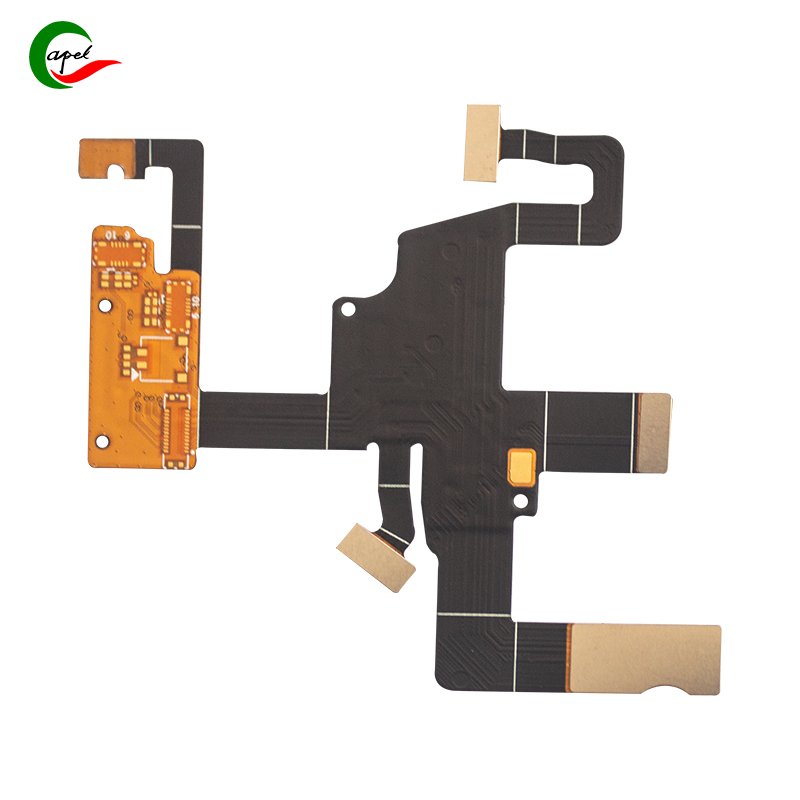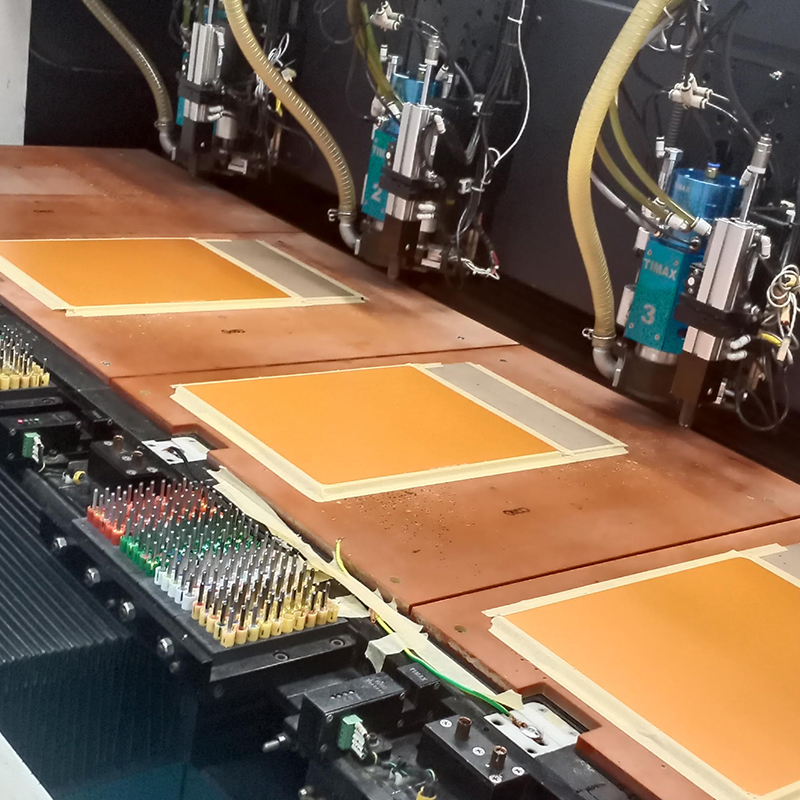This case study delves into the intricate details of a 12-layer FPC (Flexible Printed Circuit) and its application in medical defibrillators. It focuses on the technical specifications, manufacturing processes and importance of flexible PCBs in the healthcare industry.
Introduction: The role of flexible PCBs in medical technology
In the ever-evolving field of medical technology, the demand for innovative and reliable solutions continues to grow. As a key component of medical equipment, flexible PCBs play a key role in ensuring the efficiency and functionality of life-saving equipment. In this case study, we will delve into the intricate details of a 12-layer FPC (Flexible Printed Circuit) and its application in medical defibrillators. This article focuses on the technical specifications, manufacturing processes and importance of flexible PCBs in the medical field, aiming to fully understand the critical role these advanced electronic components play in the healthcare industry.
Explore 12-layer FPC flexible PCB
12-layer FPC flexible PCB represents an advanced advancement in electronic engineering. As critical components in medical device manufacturing, these PCBs are designed to provide high levels of precision, reliability and durability. The complex layering of 12 FPCs enables complex circuit designs and dense component integration, making it ideal for applications requiring compact and high-performance electronic components.
Technical specifications and their importance in medical defibrillator applications
For the technical specifications of 12-layer FPC, accuracy is crucial. For a specific application of a medical defibrillator, several key parameters must be carefully defined to ensure optimal performance. Some key technical specifications include:
1. Line width and line spacing: The line width and line spacing of FPC play an important role in determining electrical performance and signal integrity. In this case, specifying a line width of 0.075mm and a line spacing of 0.06mm allows for complex routing of high-frequency signals and distribution lines.
2. Board thickness: The board thickness of 0.4mm highlights the requirements for compact and space-saving electronic design. The FPC’s slim form factor enables seamless integration within the limited space constraints of medical equipment.
3. Minimum aperture: The minimum aperture of FPC is 0.1mm, which ensures precise and reliable welding of surface mount components and helps improve the overall robustness of the component.
4. Copper thickness: The specified copper thickness is 12um, which emphasizes the necessity of efficient heat dissipation and conduction, which is crucial for the reliable operation of the defibrillator.
5. Stiffness: The use of steel plates provides the necessary stiffness for FPC, ensuring structural integrity and elasticity to resist mechanical stress, vibration and bending.
6. Surface treatment: Immersion gold surface treatment has excellent corrosion resistance, weldability and electrical performance, which is crucial for the long-term reliability of FPC in medical environments.
Manufacturing expertise: ensuring quality and precision
The manufacturing of 12-layer FPC is a highly complex and specialized process that requires advanced manufacturing capabilities and expertise. Our highly skilled engineering team has over 16 years of expertise in medical flexible PCB production, using cutting-edge technology to ensure the highest quality of FPC for critical medical applications. The manufacturing process involves several key stages, including:
1. Design and Layout: Utilize state-of-the-art PCB design software to carefully design complex circuits and component layouts to meet the stringent requirements of medical defibrillator applications. The 12-layer stack is carefully optimized to achieve the required electrical performance and signal integrity.
2. Material selection: Choosing high-quality and reliable materials is a basic aspect of FPC production. Advanced substrate, copper foil and surface treatment materials are selected to meet medical industry standards and ensure long-term reliability.
3. Precision etching and lamination: Complex patterns and circuit traces are precisely etched onto the flexible substrate, maintaining superior dimensional accuracy and alignment. The lamination process involves bonding multiple layers of flexible materials and needs to be carefully controlled to achieve uniformity and structural integrity.
4. Precision drilling and plating: Drilling of tiny holes and vias with a minimum diameter of 0.1mm requires high-precision equipment and professional knowledge. The subsequent copper plating process ensures reliable electrical connections within the multilayer FPC structure.
5. Precision imaging and surface treatment: The application of immersion gold surface treatment requires precision imaging technology to ensure consistent coverage and uniformity. This critical step enhances the FPC’s corrosion resistance, solderability, and electrical performance.
The significance of 12-layer FPC in medical defibrillator applications
The use of 12-layer FPC in medical defibrillators highlights its critical role in ensuring seamless operation and reliability of life-saving medical equipment. FPC’s compact form factor, high-density integration and strong electrical performance help meet the stringent requirements of the medical industry. Specific attributes that make 12-layer FPC ideal for defibrillator applications include:
1. Compact and space-saving design: The FPC’s slim profile and flexibility enable seamless integration within the limited space of a medical defibrillator. This compact design helps create a portable and user-friendly medical device.
2. High-density integration: FPC has 12 layers of complex circuits that can accommodate dense integration of components, allowing the defibrillator to incorporate advanced features and functions while maintaining a small form factor.
3. Strong electrical performance: The precision design and manufacturing of FPC ensures reliable signal integrity and electrical performance, which is crucial for accurate energy delivery during defibrillation.
4. Durability and reliability: The use of high-quality materials, immersion gold surface treatment and steel plate reinforcement give FPC excellent durability, ensuring long-term reliability in harsh medical environments.
Medical Flexible PCB Manufacturing Process for Defibrillator
Conclusion: Flexible PCB Advances and Healthcare Innovation
In summary, the case study of 12-layer FPC in a medical defibrillator demonstrates the integral role of advanced flexible PCBs in the healthcare industry. Meticulous attention to technical specifications, precision manufacturing processes, and the importance of FPCs in critical medical applications emphasizes the complex interplay between electronic engineering and healthcare technology. With an unwavering commitment to quality, reliability and innovation, the use of 12-layer FPC represents the cutting-edge advancement that drives medical device development. As demand for compact, high-performance and reliable electronic solutions continues to surge, the role of flexible PCBs in enhancing medical technology remains critical, shaping the future of healthcare innovation.
Contact us today to learn more
For over 16 years, we have been at the forefront of providing superior flexible PCB solutions to the medical industry. Our unwavering dedication to precision, quality and innovation has solidified our position as a trusted partner in medical device manufacturing. If you are looking for advanced flexible PCB solutions tailored to the unique requirements of medical applications, our experienced team is ready to work with you. Contact us today to learn more about our capabilities, technical expertise and how we can enhance your medical device designs with cutting-edge flexible PCB solutions.
As the medical technology sector continues to evolve, the demand for innovative and reliable solutions is expected to grow. In the case study examined in this article, the intricate details of a 12-layer FPC (Flexible Printed Circuit) and its application in a medical defibrillator are analyzed. This article focuses on the technical specifications, manufacturing processes and importance of flexible PCBs in the medical field, aiming to fully understand the critical role these advanced electronic components play in the healthcare industry.
This article is written based on Capel’s 16 years of extensive professional experience in the field of medical flexible PCB production. Our goal is to provide valuable insights into the critical role flexible PCBs play in the evolving medical technology landscape, and we remain committed to providing superior flexible PCB solutions to the medical industry.
Post time: Mar-01-2024
Back








